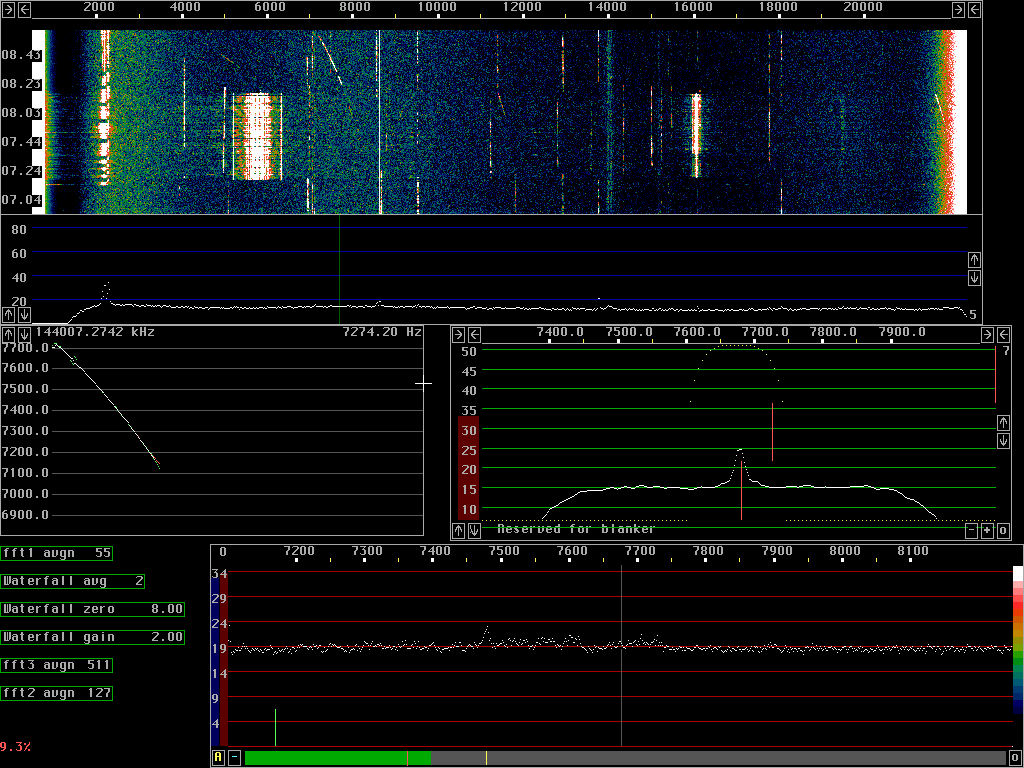SM 5 BSZ - The AFC for a quickly drifting signal.
(July 29 2001)
Testing the AFC of linrad
Searching for a signal
The AFC is designed to find and follow weak signals.
The maximum frequency drift can be selected by a parameter
and the history of transforms for a time span selected by another
parameter are evaluated are evaluated for signals drifting linearly
with time.
Strong signals can be found in much simpler ways, but that is
not really interesting since they could be received easily just
by use of more bandwidth.
A meteor (?)
Fast moving objects show up occasionaly during EME contests.
Figure 1 is from a recording from the ARRL EME contest 1998.
The doppler shift goes from 6kHz to 5kHz in about 60 seconds.
This means that the speed componentin direction towards SM5
is about 5km/s.
I do not know if this is a meteor or maybe a satellite.
What signals can be locked to?
Fig.1 shows the event. The AFC is locked to the signal that
moves from 7700Hz at 08.23 to 7100 at the top.
This is a reflection from SM5FRH who is located at 2100Hz.
As can be seen in the baseband graph, the signal is narrow.
This is a "strong" signal and the AFC follows it accurately.
The maximum frequency shift, allowed for in the search procedure
is 150Hz/minute by default.
The parameter can be increased, but the maximum value is 1000Hz/minute.
At 08.23 the frequency drift is smaller than 1000Hz/minute and the
SM5FRH as well as SM5DCX and SM0FFS are easily locked to.
SM5DCX is at 5800Hz and the doppler shifted echo is at 11300Hz.
Note that the signal is much weaker than many of the EME signals!
SM0FFS is at 16000Hz with the doppler shifted signal at about
21500Hz.
SM5FRH, SM5DCX and SM0FFS are all extremely easy to copy when
locked to.
The signal at about 5100Hz moves faster than 1kHz/minute and can
not be locked to.
This may be a DX station with a different geometry and different
doppler shift.

Fig 1.
Locking the AFC to a signal with rapidly changing doppler shift.
At the time when the processing was stopped, the signal is at
7150Hz.
The green cursor in the high resolution graph shows where the
signal is (supposed to be).
The High resolution graph uses a large number to average over
so the start of the event at 7740Hz is still in the average.
The EME signal at 7475Hz which is nearly invisible in the waterfall
graph is very easy to see in the high resolution graph due to
the long integration time.
To SM 5 BSZ Main Page
